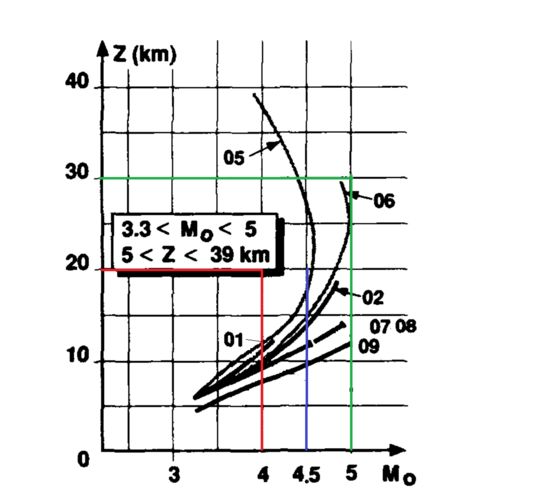The French national Research and Technology Program for Advanced Hypersonic Propulsion (PREPHA) ended in 1999. It aimed at acquiring a first know-how for the hydrogen-fueled scramjet, which could be combined with other airbreathing modes (particularly ramjet) and rocket mode for powering future reusable space launchers. It gave the opportunity to acquire a first know-how in scramjet and dual-mode ramjet components design (inlet, combustor, injection struts, nozzle) and hypersonic airbreathing vehicle system studies (design and performance evaluation for space launchers, missiles and experimental flight vehicles) [A1]. The French Aeronautics and Space Research Center (ONERA) and EADS Aerospatiale Matra Missiles (now in the new MBD.A Missiles Systems European group and its “MBDA-F” French subsidiary) have been major contributors to the PREPHA Program.
In France, after the end of the National PREPHA program, MBDA-F and ONERA have taken the initiative in starting further works to preserve the intellectual and material investment and to improve mastery of hypersonic airbreathing propulsion. Since 1997, ONERA and DLR are leading the in house research program JAPHAR (Joint Airbreathing Propulsion for Hypersonic Application Research) [A5]. This program aims at studying a hydrogen fueled dual mode ramjet working in the Mach number range from 4 to 8. It also aims at defining a methodology for ground and flight performance demonstration. That includes the definition of a possible experimental vehicle able to autonomously fly in the given Mach number range [A6]. MBDA-F leads a cooperation with Moscow Aviation Institute (MAI) to develop a dual-mode dual fuel ramjet, operating from Mach 3 to Mach 12 with a variable geometry. MBDA-F and EADS-Launch Vehicles (EADS-LV) are also developing an innovative technology for fuel-cooled composite material structures. Under the aegis of the French MoD, MBDA-F and ONERA are leading the PROMETHEE R&D program to improve knowledge on hydrocarbon fueled dual mode ramjet for missile application. Its aims at developing a propulsion system able to power a missile from Mach 2 to Mach 8. First phase is expected to end in 2002 [A16].
Previously, in Germany, some cooperative work has been performed with Russia on hypersonic flight testing issues and on scramjet flowpath technology at TsAGI (Jukowsky, Russia).
Contribution to the education of students is also one of the important elements of this scramjet technology effort.Students, young scientists or technicians are often enthusiastic to be associated, even for only several months on scramjet technology development efforts [B10], [B18].


en.wikipedia.org
